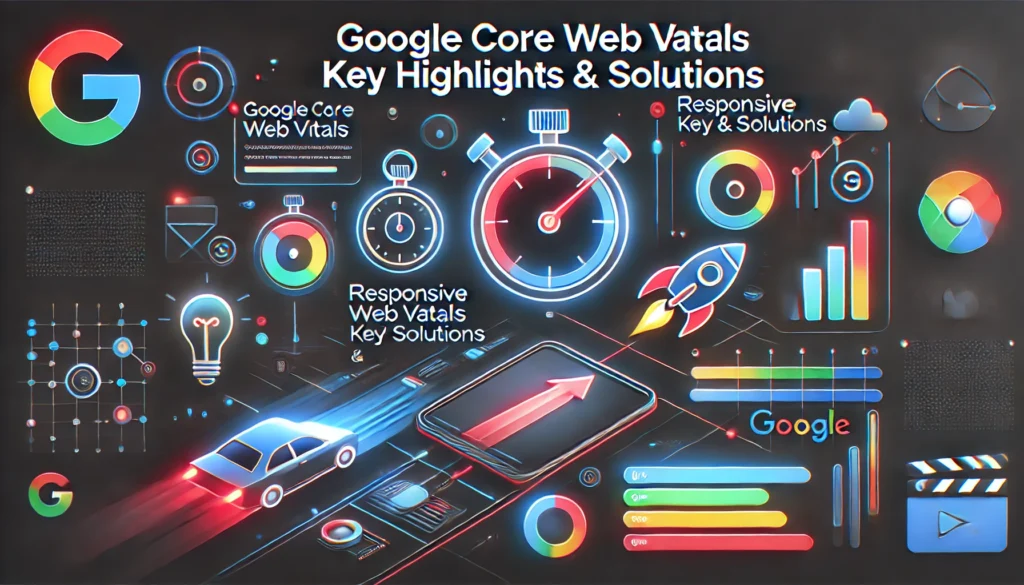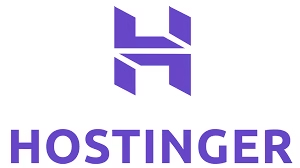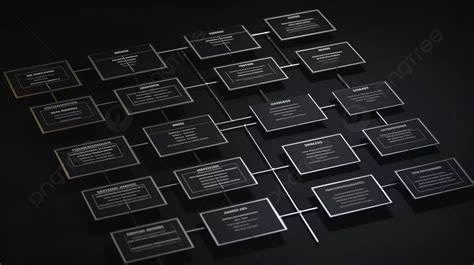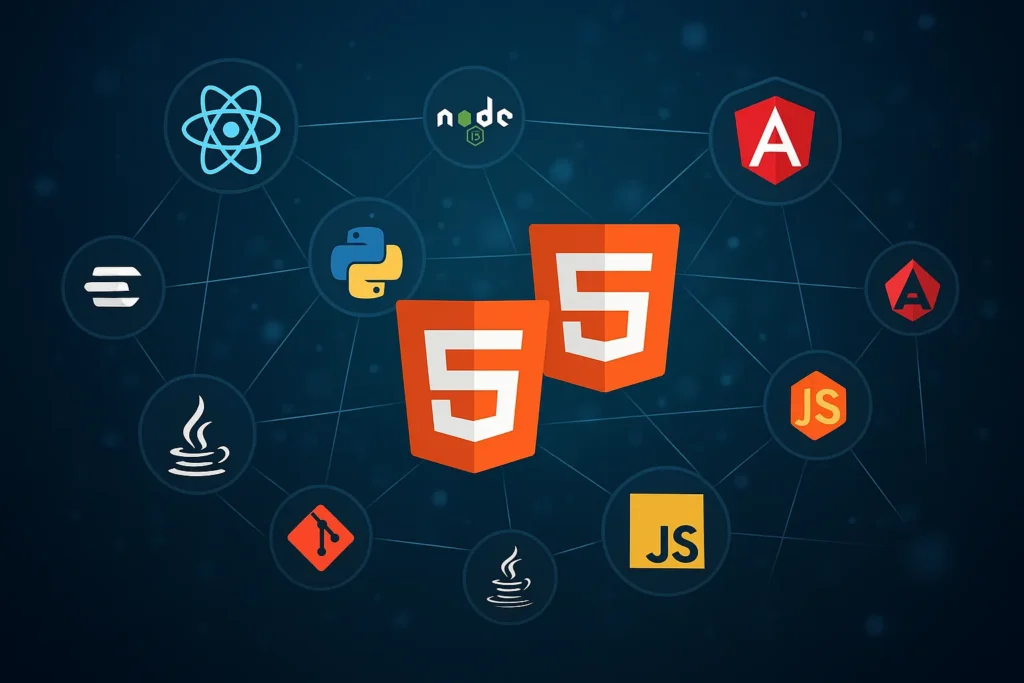We have been getting questions frequently about Google Core Web Vitals, although every detail about the topic is available on google’s Core Web Vitals page, however, we have decided to publish an article to simplify it further for beginners to understand better, which will improve your Google Rankings. You may refer to the article SEO Basics for Beginners in case you need more details on the approach to SEO from a beginner’s perspective.
What is Google Core Web Vitals
Google Core Web Vitals are a set of specific metrics that Google uses to measure and evaluate the user experience quality of web pages. You may consider them as Google’s report card for how well your website performs from a visitor’s perspective. Introduced in 2020 and became a ranking factor in 2021, these vitals focus on three key areas that directly impact how users interact with your site.

In this article we will cover
- The main Core Web Vitals
- Largest Contentful Paint (LCP) : Largest Contentful Paint (LCP) tracks loading speed by recording how long it takes for the largest visible element to appear, ideally within 2.5 seconds of page load.
- First Input Delay (FID) : First Input Delay (FID) measures interactivity by tracking the delay between a user’s first action on your page and the browser’s response.
- Cumulative Layout Shift (CLS), tracks visual stability by measuring unexpected layout shifts that occur during the entire lifespan of the page.
The main Core Web Vitals
The following are the key parameters being assessed as part of the audit
- Largest Contentful Paint (LCP) : Largest Contentful Paint (LCP) tracks loading speed by recording how long it takes for the largest visible element to appear, ideally within 2.5 seconds of page load.
- First Input Delay (FID) : First Input Delay (FID) measures interactivity by tracking the delay between a user’s first action on your page and the browser’s response.
- Cumulative Layout Shift (CLS), tracks visual stability by measuring unexpected layout shifts that occur during the entire lifespan of the page.
Why should you care about these metrics?
Beyond providing a better user experience, Core Web Vitals directly influence your search engine rankings. Google prioritizes websites that deliver smooth, fast, and stable experiences to users. Poor Core Web Vitals scores can negatively impact your organic search visibility, potentially reducing traffic and conversions. By optimizing these metrics through techniques like image compression, code minification, and server response improvements, you’re not just pleasing Google’s algorithm – you’re creating a website that visitors actually want to use and return to, which would essentially help in sticking with the customers or audience, depending on the type of website you have.
Hence it is important to comply with Google Core Web Vitals standards, this will not only help you achieve a better rank on Google, but achieving your business objective. We should think as if Google is helping identify the specific parameters for you to optimize & benefit out of it.
Simple Ways to Check Your Site’s Core Web Vital?
Checking your Core Web Vitals is easier than you might think, and Google provides several free tools to help you monitor your website’s performance. The most reliable starting point is Google Search Console, which reports how your pages perform using real-world user data.Simply navigate to the “Core Web Vitals” section in your Search Console dashboard to see which pages need attention and track your progress over time.
In addition, for immediate, detailed analysis of individual pages, PageSpeed Insights is your go-to tool, providing both mobile and desktop performance analysis along with actionable recommendations Core Web Vitals report – Search Console Help to improve your metrics. You can access it at pagespeed.web.dev and simply enter your URL for a comprehensive report. Google Lighthouse, available as a Chrome extension or built into Chrome DevTools, offers another powerful option for auditing your site’s performance.
For ongoing monitoring, you may consider the Web Vitals Chrome extension, which automatically provides a quick Core Web Vitals audit when you visit any webpage Core Web Vitals. Additionally, third-party tools like GTmetrix, DebugBear, and various website monitoring services offer more detailed analytics and historical tracking capabilities.
Resolving the issues highlighted in the audit report?
Resolving PageSpeed Insights issues becomes manageable when you understand what each recommendation means and how to address it systematically. PageSpeed Insights provides both lab and field data about your page, offering suggestions on how that page may be improved. Understanding Core Web Vitals and Google search results, with actionable recommendations to address issues like unoptimized images, render-blocking resources, and inefficient code. Measure And Optimize Google Core Web Vitals: A Guide | DebugBear. Here’s a comprehensive breakdown of the most common PageSpeed Insights issues and their solutions:
The following are some of the recommended solutions; however, it is always a good idea to connect with your SEO consultant, if you still find it difficult, since one wrong move may either cost your site speed or the layout itself.

Performance Issues & Solutions
- Eliminate Render-Blocking Resources: These are scripts, stylesheets, and HTML imports that block or delay the browser from rendering page content to the site pages.
- Possible Solution: Inline critical CSS, defer non-essential JavaScript, use async attributes, and minify CSS/JS files
- Largest Contentful Paint (LCP) Issues: Problems with loading the largest visible element on your page
- Possible Solution: Optimize hero images, implement lazy loading, use CDNs, and reduce server response times
- Unused CSS: Stylesheets containing significant amounts of code not applied to the current view/page
- Possible Solution: Remove unused CSS, split stylesheets by page type, and use CSS purging tools
- Properly Size Images: Images that are larger than necessary for their display size
- Possible Solution: Resize images to match display dimensions, use responsive image techniques, and implement srcset attributes
- Serve Images in Next-Gen Formats: Using outdated image formats like JPEG/PNG instead of modern alternatives
- Possible Solution: Convert images to WebP, AVIF, or other modern formats while maintaining fallbacks
- Efficiently Encode Images: Images not optimized for web delivery
- Possible Solution: Compress images using tools like TinyPNG, optimize image quality settings, and remove metadata
- Enable Text Compression: Server not compressing text-based resources
- Possible Solution: Enable Gzip or Brotli compression on your server for HTML, CSS, and JavaScript files
- Reduce Server Response Time: Slow Time to First Byte (TTFB)
- Possible Solution: Upgrade hosting, optimize database queries, implement caching, and use Content Delivery Networks
- Avoid Excessive DOM Size: Pages with too many HTML elements
- Possible Solution: Simplify page structure, remove unnecessary elements, and optimize HTML markup
- Minimize Main Thread Work: JavaScript blocking the main browser thread
- Possible Solution: Split large JavaScript bundles, defer non-critical scripts, and optimize third-party code
Our Final Thoughts
Since PageSpeed is a performance optimization tool, its recommendations are a bit biased in favour of speed. However, end of the day, we have to strike a balance between the page speed & the site functionality, which offers the core products or services to the end users.
If you are in a similar situation, please take careful consideration before taking any critical action, which may have the potential to optimize or break the site. Always test changes on a staging environment first and prioritize fixes based on their potential impact on your Core Web Vitals scores.
Please feel free to comment or reach out in case I have missed any significant part of the process.








